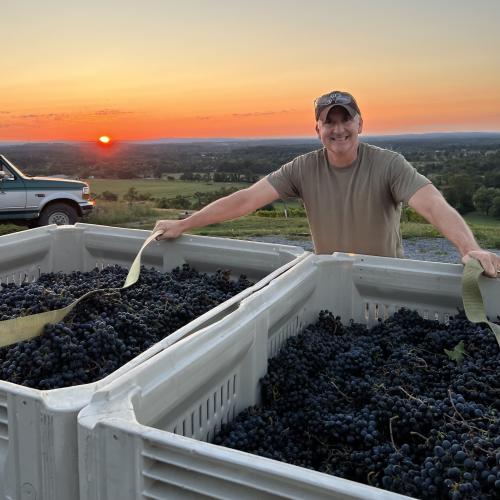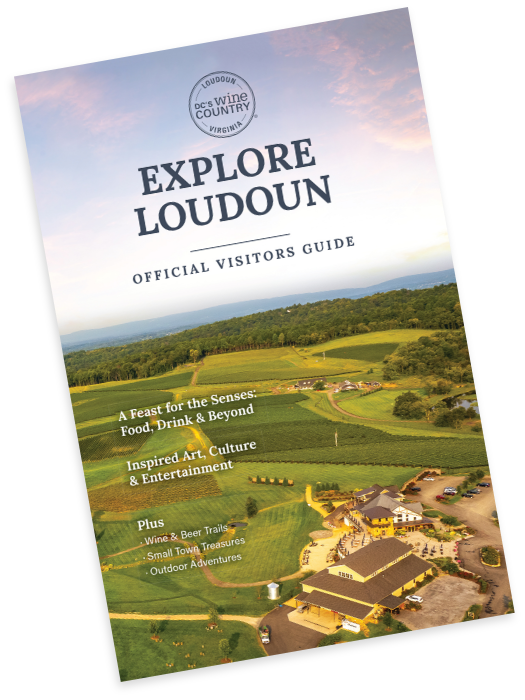Winemaking is a complex process. The time taken to plant, cultivate and harvest grapes and then barrel, age and bottle wine can be years, even decades. That Cab you’re drinking had a long life before it touched your lips. Something else in the winemaking process has a long life: a wine barrel. Everyone knows barrels are used to round off wine but where do they come from, how long do they last and what happens when they’re no longer of use to the winemaker?
Region of Barrels
“Ours come from three different coopers (barrel makers) in France,” said Tim Kish, winemaker at 868 Estate Vineyards in western Loudoun. “They’re made from French oak sourced from various forests in central France. Depending on several factors, prices are between $900 and $1300 each.”

Winemaker Tim Kish - 868 Estate Vineyards
PC: 868 Estate Vineyards
While France and Spain are the leading barrel makers in Europe, barrels made from Hungarian oak are challenging the old order. “The majority of our barrels come from France, but we source a couple of Hungarian barrels every year too,” said Todd Henkle owner and winemaker at The Vineyards & Winery at Lost Creek. “We found that one barrel from a cooperage in Hungary has really nice harmony with our Cab Franc.” Doug Fabbioli at Fabbioli Cellars concurs: “A barrel we get from Hungary is used specifically for our Cab Franc. They currently cost about $900 each and can age about 24 cases of wine.”

Winemaker Doug Fabbioli - Fabbioli Cellars
PC: Jim Hanna Photography
None of which is to discount American oak.
Several Loudoun wineries use American oak barrels including ones from trees grown close to home. “We love using Virginia oak,” said Jake Blodinger, winemaker at Chrysalis Vineyards at the Ag District. In general, French or Hungarian oak has a finer grain than American oak and can impart a richer contribution of aromatic components to the wine. The size of the barrels can also impact the taste and complexity of a wine.

Winemaker Jake Blodinger - Chrysalis Vineyards at the Ag District
PC: Chrysalis Vineyards
“Most of our barrels are 225-liter though we do purchase a 500-liter puncheon every year for our Chardonnay program,” said Henkle. “Fermenting and aging our Chardonnay in that size of barrel imparts an elegant oak influence without going over the top. Because the ratio of barrel surface area to wine volume is less in the larger formats the oak influence is gentler.”

Winemaker Todd Henkle - The Vineyards & Winery at Lost Creek
PC: Lost Creek Winery
So how long does a barrel last before it stops impacting the wine it holds?
Barrel Sustainability
“Barrels can last for decades if properly cared for, but they only impart their oaky, toasty qualities for about three years in diminishing amounts,” said Kish at 868 Estate.
Which is when things get interesting. Unlike wine, which lasts momentarily on the tongue and then only in memory, wine barrels go on to live other lives, repurposed as décor or furniture at wineries or in homes: tables, stools, mirrors, plates, wall décor, signs, flowerpots, ornaments and more. Almost all Loudoun wineries sell their used barrels – usually for between $100 and $120. “We sell them to customers,” said Bill Hatch of Zephaniah Farm Vineyard. “We have a barrel on site that Don Wolfe, a club member adapted into a beautiful rack for bottles and glasses.”
Chris Charron, one of the owners of 868 Estate, cuts the tops off wine barrels on a lathe to create beautiful wooden platters that can be used for cheese and charcuterie. At Chrysalis, Blodinger made a Christmas tree out of several retired barrels last December and decorated it with lights and garland. It became a popular gathering point in the tasting room. The executive chef at Lost Creek has even used wine barrel wood chips for smoking meats. Perhaps fittingly, given Loudoun is such a renowned craft beverage destination, some wine barrels go on to be used in the production of different beverages. Weird Brothers Coffee has used Fabbioli barrels to age coffee beans, Old Ox Brewery has used them for aging beer and other barrels have gone on to Flying Ace Distillery to be used in the rum aging process. One of Zephaniah’s barrels was used by Loudoun Brewing to make beer and Boxwood Estate has sold barrels to distilleries to make wine-infused bourbon or rye. Indeed, at Mt Defiance in Middleburg, Chief Distiller Peter Ahlf is currently using an Oloroso Sherry barrel made from French oak to finish a batch of bourbon. “The bourbon was aged for three and a half years in new oak, and we expect to finish it for nine months in the sherry barrel,” Ahlf said. “We expect it to impart dried fruit and nut flavors to the bourbon.” Ahlf plans to release it for the distillery’s 10th anniversary celebration in August.
Given this year is the 40th anniversary of Loudoun wine, raise a glass to all the wonderful wine barrels that help make Loudoun taste so good.



